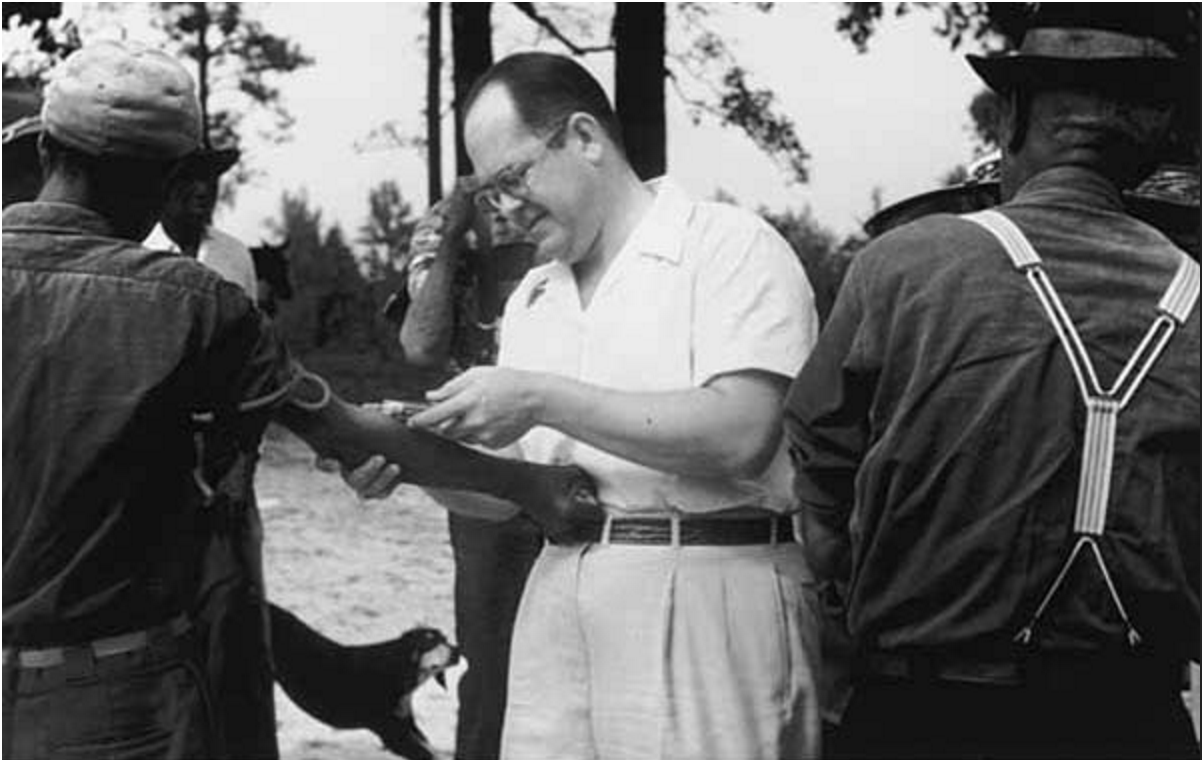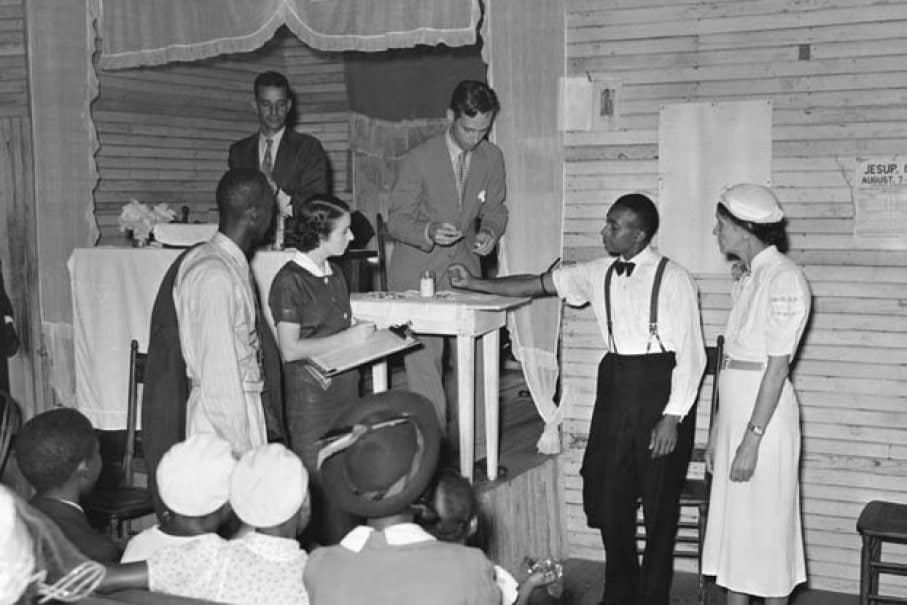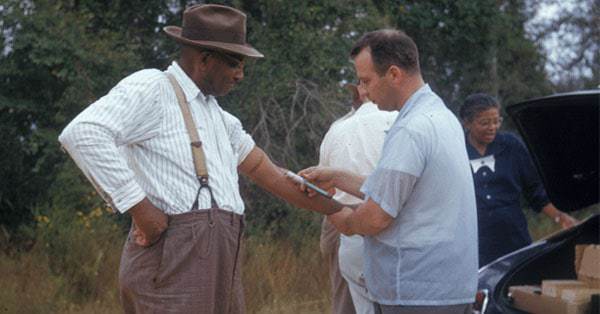The Tuskegee Study of Untreated Syphilis in the Negro Male, also known as the Tuskegee Syphilis Study was a clinical study conducted by the U.S. Public Health Service between 1932 and 1972. The purpose of the study was to observe the natural progress of untreated syphilis in rural African-American men. The patients were told that they were receiving free health care from the United States Government.
The Public Health Service, in collaboration with the historically black college Tuskegee University, enrolled 600 African American sharecroppers. 399 of these men had been previously diagnosed with syphilis. The subjects were given free medical care, meals, and free burial insurance for participating in the study. When funding was cut, the experiment continued without telling the subjects that they would never receive treatment.
In 1947, penicillin had become the standard treatment for penicillin. The scientists elected to withhold treatment. The scientists also prevented the participants from accessing syphilis treatment available to the other members of the community.
The study continued until 1972, when the experiment was leaked to the press by Peter Bruxton. The test was terminated on November 16, 1972. Many men had died, 40 wives contracted the disease, and 19 children were born with congenital syphilis.
Because of the experiment, Congress passed the National Research Act and created a commission to study write regulations governing studies involving human experiments. The Office for Human Research Protections was established to oversee clinical trials. Now studies require informed consent, communication of diagnosis, and accurate reporting of test results. In 1997, President Bill Clinton formally apologized and held a ceremony for White House for surviving participants.











